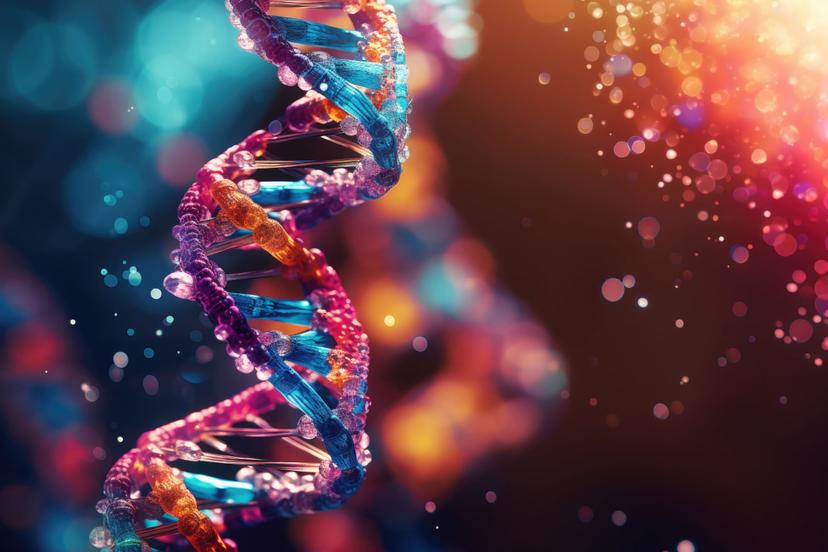Evolution in gene therapy vector analysis
Discover the latest technology to supercharge your gene therapy vector analysis workflow
16 Apr 2024

Within the ever-evolving field of gene therapy, vectors play an indispensable role as essential carriers, delivering therapeutic genes into target cells. Viral vectors, such as the adeno-associated virus vector (AAV), are commonly employed for this purpose. These genetic vehicles are pivotal for delivering functional genes to individuals with genetic disorders and therefore require rigorous quality analysis.
Vector analysis involves the assessment of critical quality attributes such as structural integrity, genetic payload accuracy, strength, and purity. Techniques such as PCR, next-generation sequencing, and mass spectrometry are deployed for this purpose, shedding light on the vectors' safety, effectiveness, and overall success in the realm of gene therapy.
This top list has been curated by our expert editors at SelectScience® and encompasses a range of what we believe to be some of the most exciting developments in gene therapy vector analysis.
1. Rapid characterization of AAV critical product quality attributes
908 Devices Inc. presents its ZipChip™ CE-MS device, a revolutionary tool for rapidly characterizing critical product quality attributes in biologics, oligonucleotides, RNAs, and AAVs. The company is transforming chemical and biochemical analysis through user-friendly mass spectrometry devices that deliver rapid results on-site. The ZipChip device utilizes microchip-based capillary electrophoresis (CE) and nano-electrospray ionization technology, streamlining sample preparation, and enabling high-speed and high-resolution separations.
2. Boost viral vector production with chemically defined viral feeds
Discover FUJIFILM Irvine Scientific’s latest chemically defined, nutrient-based HEK293-specific feed medium, designed to boost AAV production for gene therapy applications and viral vector-based vaccines.
3. Tissue biodistribution of AAV-based gene therapy
AAV tissue biodistribution and cell tropism are essential pieces of information for every gene therapy development program. Download this application note to learn about the RNAscope® ISH assay, a highly informative method for quantitative, cell-specific measurement of AAV vector and transgene expression.
4. Automation for viral titer and impurity analyses
Immunoassays are used for vector titer and impurity analysis. However, limitations in current methods can create bottlenecks in workflows, and the development of high-quality assays for biotherapeutic development can be difficult and time-consuming. Learn how automated platforms such as the Gyrolab® Immunoassay systems from Gyros Protein Technologies can improve the efficiency of assay-based processes and can support the development of custom assays.
5. Optimize osmolality to improve AAV production
The use of viral vectors is now a common approach within cell and gene therapy, but there are still difficulties when scaling up for bioprocessing. This study, presented by Advanced Instruments and undertaken by Cell and Gene Therapy Catapult, provides preliminary evidence for impact on overall yield, and quality of the adeno-associated virus 1 (AAV) due to a timed osmolality shift with and without a feeding step.
6. Solutions to AAV-based gene therapy manufacturing challenges
In this article, Dr. Markus Krieger, Vice President, Technology Development, and Clive Glover, Viral Vector Leader at Cytiva, discuss the challenges that the emerging field of adeno-associated virus (AAV)-based therapies is facing. They also share their thoughts on the methods used to manufacture AAVs and how co-optimizing components in the viral vector workflow may help solve a lot of the hurdles in the field today.
7. AAV manufacturing workflow
Download this application note by Cytiva to learn about the objectives, considerations, and strategies for each step of an AAV manufacturing workflow. Additionally discover the biotherapeutic characterization technology designed to streamline the determination of potency, purity, and strength of your AAV products.
8. Sharpen your gene therapy toolkit with static light scattering (SLS)
NanoTemper Technologies has now added static light scattering (SLS) to its Prometheus Panta, allowing scientists to characterize their AAV vectors – whether it be serotyping, formulation, or capsid filling and leaking – with very little sample. Read more about the Prometheus Panta SLS here.
Discover the latest news on gene therapy by signing up for our free newswires, where our expert editors collate the latest products and news in the field.
